Dive into Dalmatian Molly care: size, diet, lifespan, and more. Your complete guide to keeping these charming aquarium companions happy.
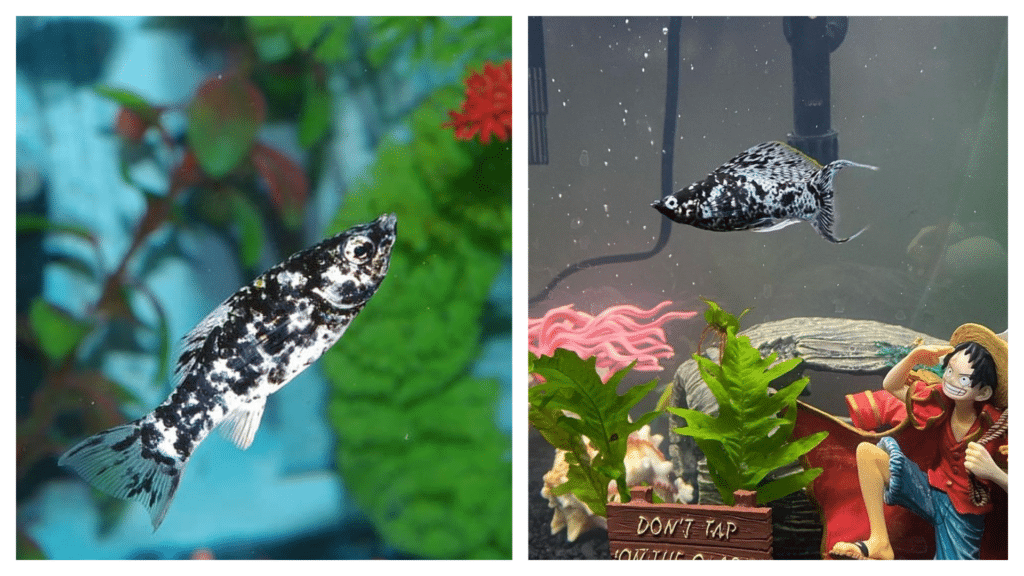
With their charming black spots resembling the famous Dalmatian dog breed, Dalmatian Mollies have earned their place as a beloved choice among aquarium enthusiasts. These fascinating fish add a uniqueness to any freshwater aquarium.
To ensure their well-being and happiness in your tank, it’s crucial to have a comprehensive understanding of Dalmatian Molly care. In this extensive guide, we’ll explore every aspect of their care, making you a seasoned Dalmatian Molly enthusiast.
With optimal tank conditions and a diverse diet, Dalmatian Mollies make an incredibly beautiful addition to any aquarium. This comprehensive care guide will have you well-prepared to create a thriving aquatic habitat for these captivating livebearers.
Dive into the world of Dalmatian Mollies and witness their black-spotted elegance elevate the charm of your aquarium.
The World Bucket List’s interesting facts about Dalmatian mollies:
- Dalmatian mollies are livebearers, meaning they give birth to live fry (baby fish) instead of laying eggs.
- These fish are known for their prolific breeding. Female Dalmatian mollies can produce multiple broods from one mating session.
- The natural habitat of the Dalmatian Molly is in the waters to the south of North and Central America. In particular, Mexico and parts of the US.
- Helpfully, a Dalmatian Molly’s appetite for algae can help control and reduce algae growth in your aquarium.
- The Dalmatian Molly is able to adapt to various water conditions. This even includes slightly brackish water – a mix of fresh and saltwater.
Size and appearance – the Dalmatian molly’s distinctive look
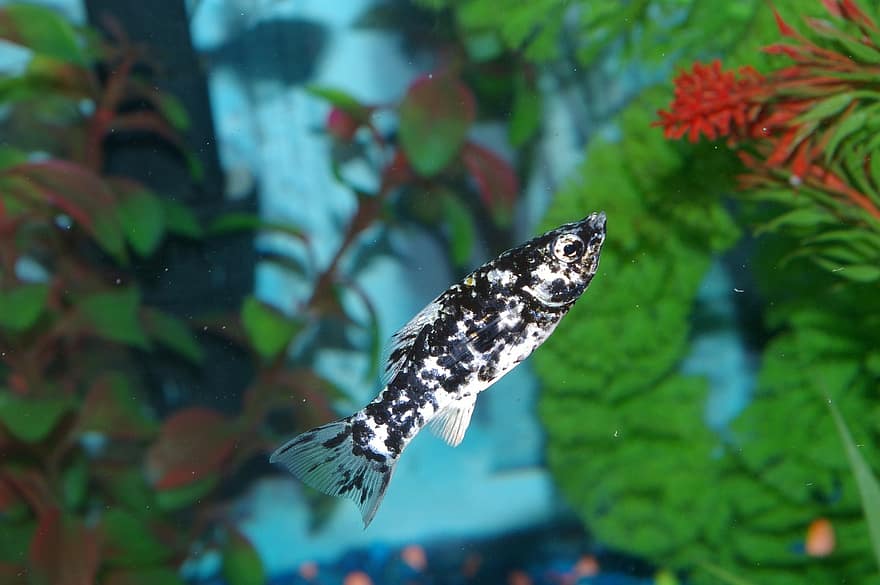
Poecilia latipinna is the scientific name for the species the Dalmatian Molly comes from. These fish boast a captivating appearance. Their white bodies adorned with contrasting black spots make them resemble their canine namesakes.
Typically, adult Dalmatian Mollies grow to a size of 2 to 4 inches (5 to 10 cm). This moderate size makes them suitable for a variety of tank sizes.
Tank size and water parameters – creating the perfect home
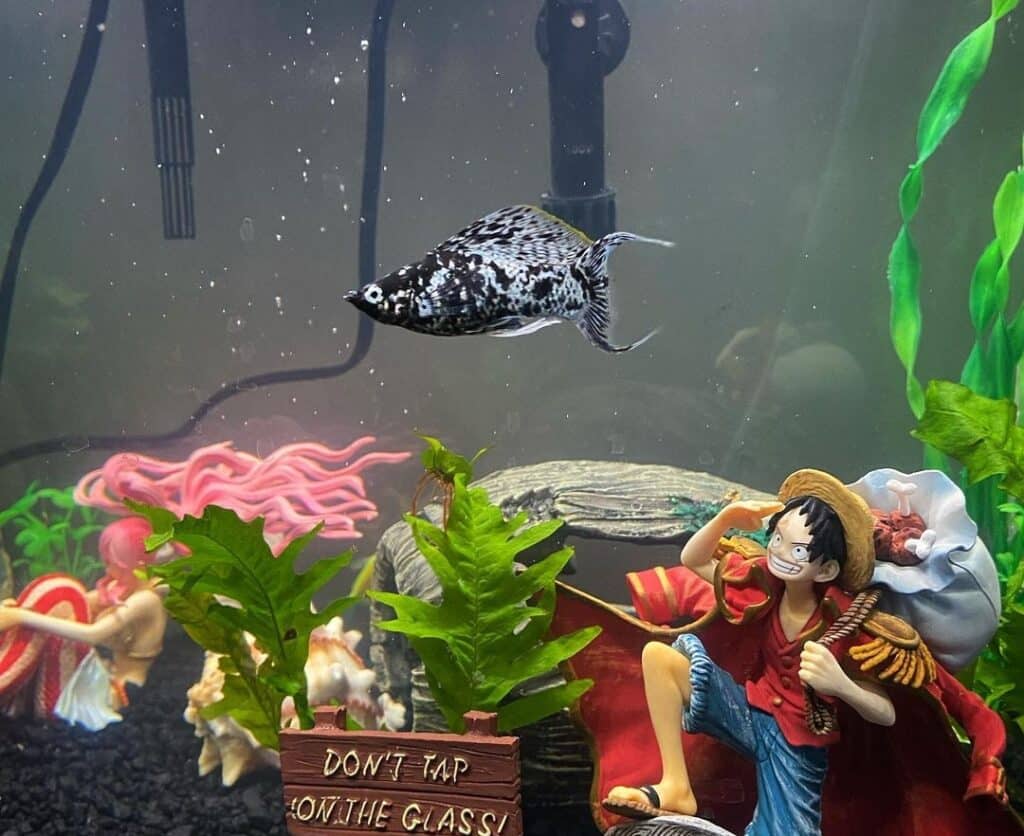
When establishing an aquarium for Dalmatian Mollies, aim for a tank size of at least 20 gallons. These fish thrive in spacious environments, and a larger tank can accommodate a small community of mollies and other compatible fish species.
Maintain a water temperature between 72-78 F (22-26 C) and ensure the pH level falls within the 7.0 to 8.0 range. Consistently monitoring and maintaining water quality is crucial for their well-being.
Diet and nutrition – feeding Dalmatian Mollies
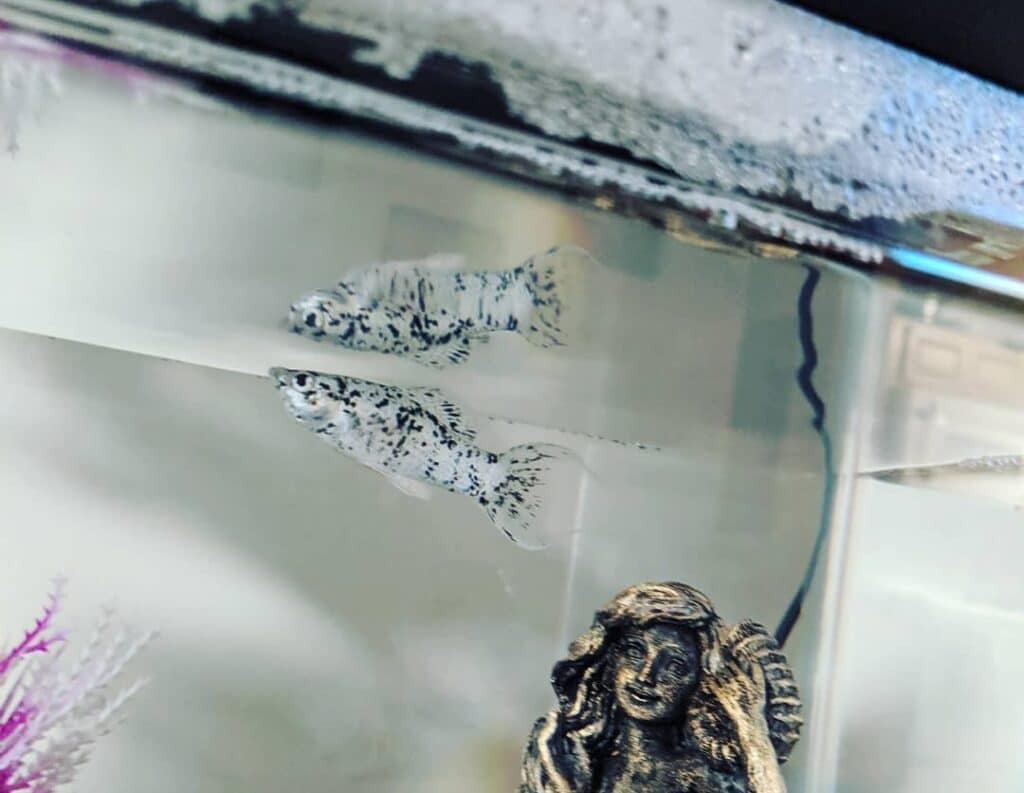
Dalmatian Mollies are omnivorous, relishing a diverse diet. Their diet includes crustaceans, algae, worms, and small insects in their natural habitat.
For your aquarium, it is recommended to feed them high-quality flake or pellet food and live or frozen treats like brine shrimp, bloodworms, and daphnia. A balanced diet enhances their colour and overall health.
Tank mates, breeding & lifespan – choosing companions for your Dalmatian mollies
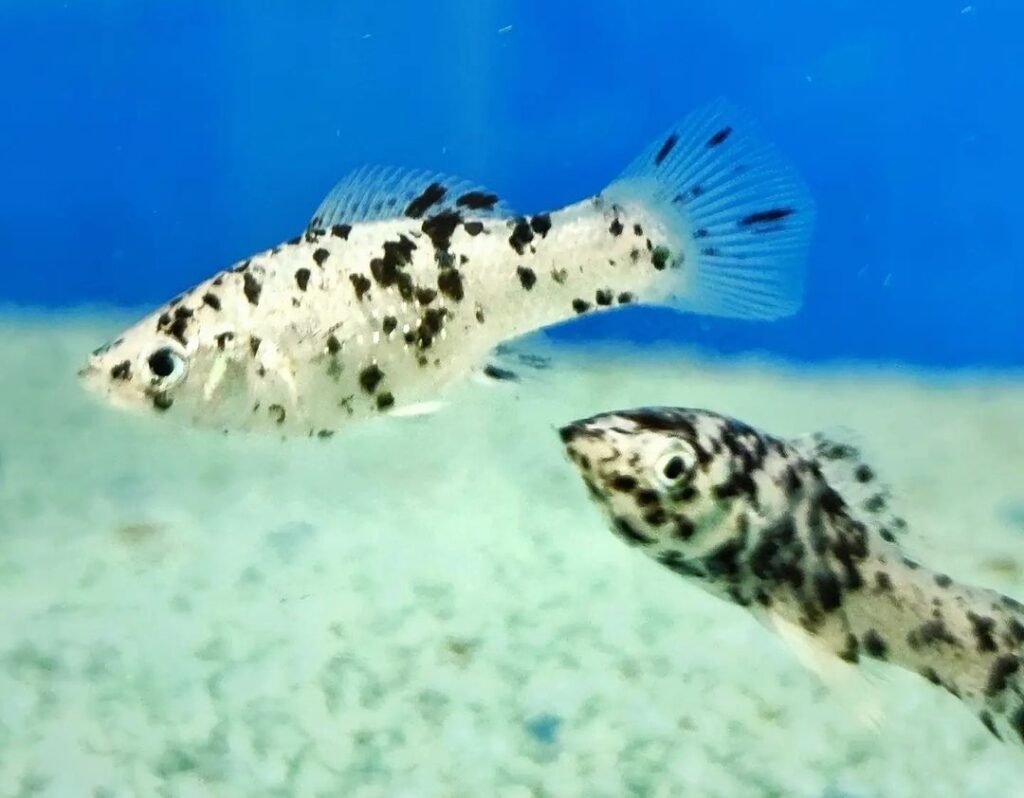
Dalmatian Mollies are generally peaceful, making them excellent tank mates for various species, such as guppies, platys, swordtails, and lyretail mollies. However, exercise caution with aggressive fish-like barbs, which can stress your mollies.
These mollies may also exhibit fin-nipping behaviour, particularly towards males with larger dorsal fins. If aggression arises, consider rearranging tank decorations to provide hiding spots and reduce tension.
Breeding Dalmatian Mollies can be a thrilling venture. These prolific livebearers are known for their reproductive prowess. Female mollies can store sperm from a single mating session, which they can use to produce multiple broods.
You should establish a separate breeding tank full of plants like Java fern and Anubias for successful breeding. These offer safe spaces for offspring.
Dalmatian Mollies have an average lifespan of 3 to 5 years when provided with proper care. They are relatively hardy, making them an ideal choice for beginners.
Their captivating appearance and intriguing behaviour make them a valuable addition to any freshwater aquarium.
Balloon varieties – genetic curiosities
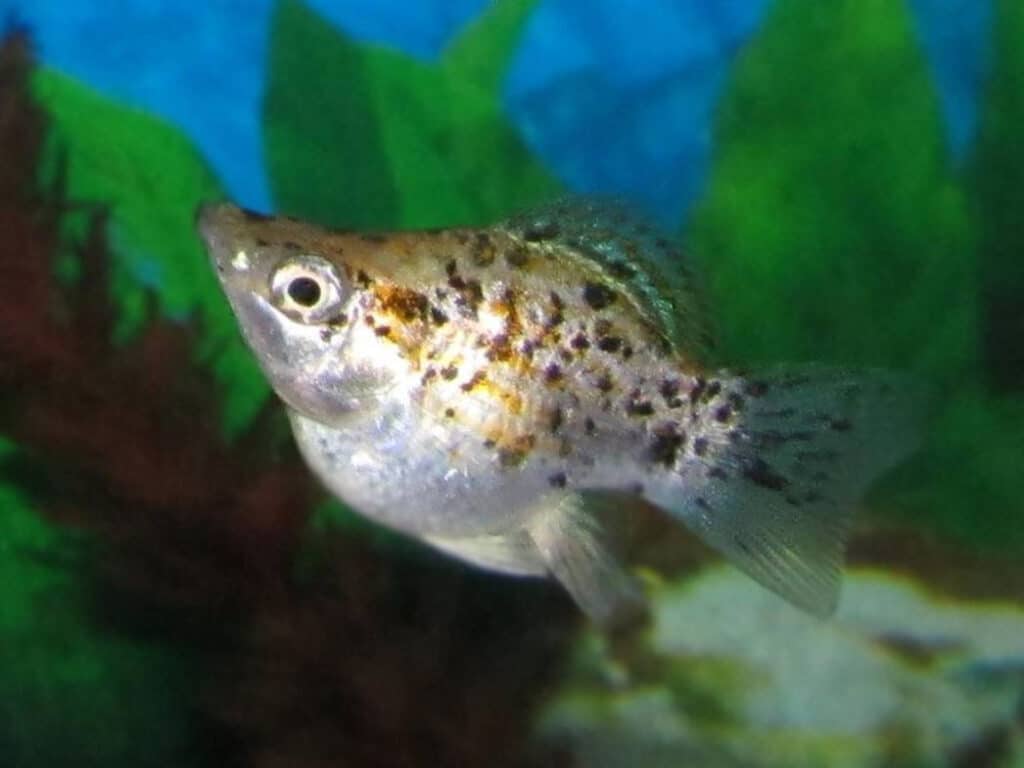
In the world of these particular fish, there’s an intriguing genetic twist known as the “balloon” variety. These unique fish have been selectively bred to exhibit a distinctive appearance. A rounded appearance, creating an almost balloon-like silhouette.
This genetic variation results in a bloated belly and a rounded body shape, giving them an entirely different charm compared to their standard counterparts.
Bear in mind that “balloon” mollies require different car routines. Researching these specific needs before adding this variety to your tank is essential.
Your questions answered about Dalmatian Mollies
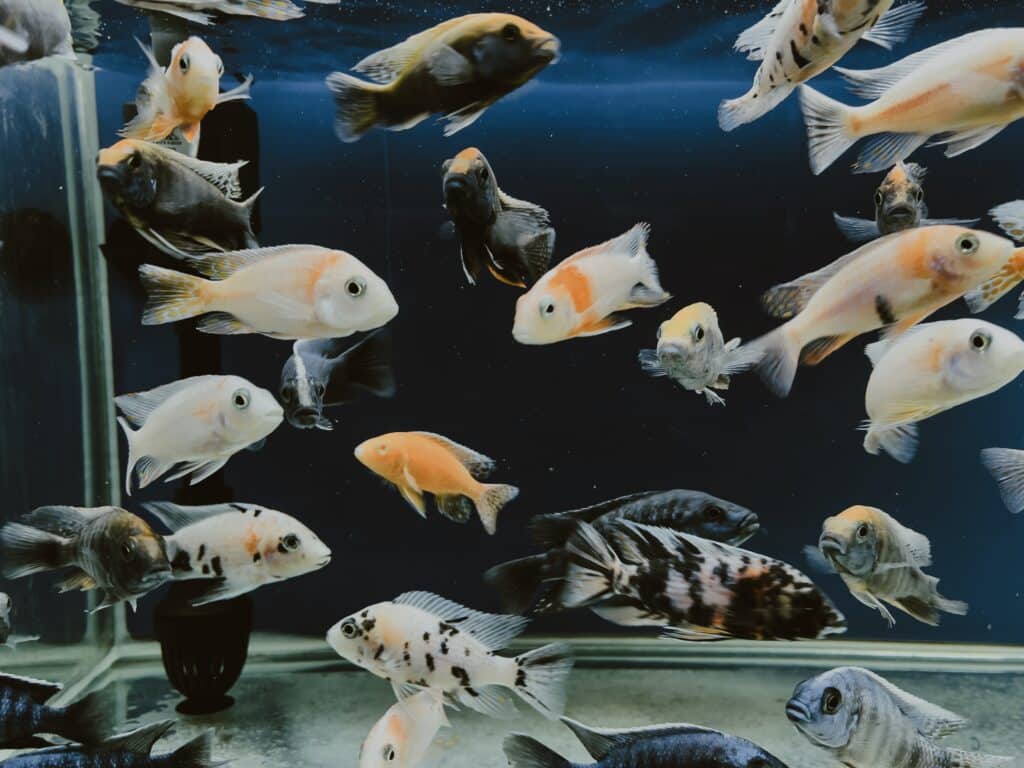
If you still have questions about this topic, we have gathered and answered the most frequently asked questions from our readers and online search engines to inform you further.
How many Dalmation Mollies should be together?
The number of Dalmatian Mollies you should keep together largely depends on your tank size, but having at least three to four in a group can help reduce stress and promote social behaviour.
What is the personality of a Dalmatian molly?
Dalmatian Mollies are known generally to have a peaceful and social personality, making them compatible with a variety of tank mates in a community aquarium.
How big do Dalmatian mollies get?
Dalmatian Mollies typically grow to a size of 2 to 4 inches (5 to 10 cm) when fully mature.
How do you take care of a Dalmatian molly?
We recommend maintaining a tank of at least 20 gallons and providing the fish with a balanced diet, including flaked and pellet food and live or frozen treats. You should also monitor and maintain optimal water conditions for the Dalmatian Molly.
RELATED ARTICLES:
Apistogramma care guide: size, diet, lifespan, and MORE unveiled

